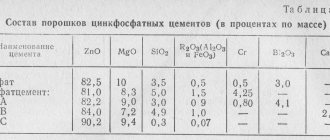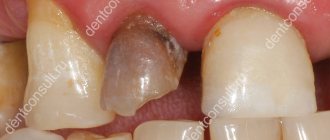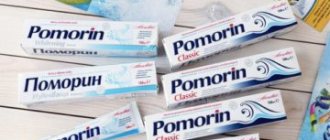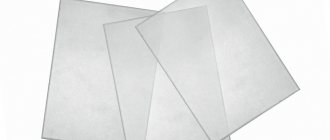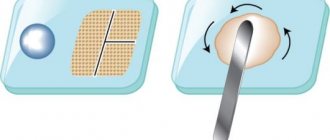Procedures for fixing crowns at the Hollywood clinic
Restore chewing function to your teeth and restore aesthetics to your smile.
A crown is a permanent prosthesis. It restores the aesthetic and chewing function of the tooth. The service life depends on the type of crowns, but, as a rule, it is at least 10 years. For the fixation procedure to be successful, you need to entrust it to a professional. The Hollywood Clinic guarantees the quality of dental services.
When to place crowns
Crowns are installed in the following cases:
- most of the tooth is destroyed by caries or due to trauma,
- the crown part of the tooth is destroyed, but the root is preserved,
- pathological abrasion of enamel,
- teeth look unsightly due to changes in the color of the enamel or tooth shape.
In modern dental practice, ceramic and metal-ceramic crowns are mainly used. The first ones look very natural and visually cannot be distinguished from real teeth. Aesthetics and durability have a corresponding price. As for metal-ceramic crowns, they are most often installed on chewing teeth. The crown is a metal frame lined with ceramics. It looks very natural and is durable. The only thing is that when the gums are lifted, the metal becomes visible.
Gold crowns, popular in the Soviet and early post-Soviet years, are not so in demand today due to their colors. Although, in terms of its performance characteristics, gold is ideal for microprosthetics.
Crown fixation procedure
The procedure for fixing crowns includes several stages. At the first appointment, the dentist examines the oral cavity and draws up a plan for tooth restoration. If necessary, treatment is carried out. The doctor then prepares the tooth for a crown. Using the tool, it is given a shape - the basis for the future prosthesis.
The next step is to take an impression of the oral cavity. The dentist uses a special paste that allows you to make an impression of the teeth. Based on the impression, a crown is created in the laboratory. This takes several days/weeks. While waiting for the impression, the ground tooth is covered with a temporary plastic crown. This is necessary to protect it from caries and other negative factors.
The crown is fixed with cement. Sometimes it is practiced to use a temporary solution. It allows you to wear the crown for several days and evaluate how functional it is and how it fits in shape/size. Then the temporary solution is replaced with a permanent one. In the future, if it is necessary to remove the crown, it can only be sawed. Therefore, as a precaution, temporary cement is used.
Crown care
Caring for a crown is no different from caring for other teeth. Dentists at the Hollywood Clinic recommend using dental floss and performing hygiene procedures using toothpaste and a brush several times a day. For preventive purposes, it is recommended to visit a doctor twice a year.
The Hollywood Aesthetic Medicine Clinic provides a wide range of dental services. We use consumables from the brands Kerr, Estelite, Filtec. Together with Italian Castellini equipment and the experience of doctors, this allows us to achieve excellent results. The fixation of the crowns will be performed flawlessly. Call to make an appointment. You will review your dentist's diplomas and certificates in the office.
Air entrainers
Advantages
Thanks to the use of an air-entraining additive, cement becomes more porous, which increases the frost resistance of constructed structures by 2 or more times. Why? Because frozen water expands into the resulting microscopic pores, and not into the thickness of the cement. That is, the main task of the additive is to create a microporous structure in the cement mortar.
In addition, air-entraining additive for cement:
- makes the solution more homogeneous, plastic and mobile by 15-30%;
- increases the degree of water resistance;
- increases resistance to aggressive environments and salts;
- reduces density by 50...150 kg/m3;
- prevents an increase in internal pressure;
- reduces cracking;
- helps reduce the degree of stratification of the solution;
- eliminates the appearance of corrosion on the fittings.
Cement mortar with air entrainment has improved workability.
Dosage
The product is introduced into the mortar in small doses. The concentration is indicated on the product packaging. As a rule, the calculation is made according to the principle: 0.05-0.20% of the additive from the total mass of the mixture.
It is recommended to dilute the additive in water and pour it directly into the concrete mixer when mixing the mortar.
Important ! An overdose of air entrainer leads to a decrease in the strength of the structure (an increase in air content by 1% reduces the strength of cement by 5.5%).
Scope of use
An air-entraining additive for cement is used for:
- construction of road, airfield and bridge structures;
- performing plastering and masonry work.
PS The product should be stored in a tightly closed container, in a place protected from sunlight and frost.
Mix accelerators
Advantages
The main purpose of this cement additive is to speed up the hardening process of the solution. At low ambient temperatures, the setting time of the mixture increases, and in severe frost it stops altogether (due to crystallization of the water included in the solution). Moreover, when thawing, the building material loses quality: it becomes more prone to cracks, poor compaction, and shrinkage.
Thanks to the accelerator, the procedure goes faster. This allows you to do multi-layer pouring in a shorter time, which significantly saves labor and money costs.
At the same time, other quality characteristics of the building material are improved:
- mobility increases;
- strength increases by 25%;
- resistance to moisture improves by 3 times and temperature changes;
- workability increases.
The product is available in powder or liquid form.
Dosage
Indicated on the packaging. Can vary from 0.02 to 5.0% of the total mass of the cement mixture.
What is it used for?
The accelerator should be added to cement:
- If necessary, build a large number of structures in a short time.
- When construction is carried out at ambient temperatures below 0°C.
- In a situation where it is not practical to wait 28 days for the solution to completely harden.
The additive is also used when solving non-standard construction problems, for example, pouring a monolithic pool bowl.
Important ! The accelerator contains chemical elements, so it is not used together with reinforcement, nor is it combined with other cement additives.
Video: CemFix concrete hardening accelerator
Retarders
Advantages
As the name of the additive suggests, it is used to slow down the hardening process of cement. That is, thanks to this product, the setting of the solution is paused, prolonging the “survival” of the finished composition.
In addition, when using the product:
- workability is maintained;
- the mixture is highly mobile;
- Cement costs are reduced;
- strength increases;
- shrinkage is reduced;
- the surface quality of the finished project improves.
This is an important additive that allows for trouble-free cementing and the erection of strong monolithic structures.
How does it work?
Once in the solution, the additive begins to inhibit the hydration of cement. Lime in the material is released more slowly, which slows down the process of binding the grains.
Dosage
As for the percentage of the additive to the total mass of cement, it is determined experimentally on small volumes of the mixture.
Why use retarders?
It is advisable to use a cement additive when:
- It is necessary to transport the cement mixture over long distances.
- There is no way to quickly pour cement.
- The technical process is designed for the gradual use of the mixture.
- Large areas need to be cemented.
- Gently build a precast cement structure.
Retarders are also used to create exterior wall panels.
Video: surface concrete retarder
Compaction additives
Advantages
The main property of the product, also known as a “colmatizing additive,” is an increase in the density of the material, which in turn has a positive effect on the service life of the mixture. How does it work? The additive fills the space between the grains of cement, thus increasing its density, strength and water resistance.
When adding the product, the cement becomes more:
- uniform and smooth;
- frost-resistant;
- wear-resistant;
- durable.
Cement with a compacting additive is less susceptible to aggressive environmental influences.
Dosage
Recommended proportions, according to practical studies: from 0.1 to 0.12% of the additive in liquid form of the total mass of the cement mortar. The dosage may vary to a greater or lesser extent depending on the requirements for the solution.
Area of use
It is recommended to introduce a compacting agent at the end of mixing or together with the mixing water. From the moment the product is added, the solution should be stirred for at least 30 minutes.
The compacting additive for cement is suitable for the production of:
- drainage products;
- paving slabs;
- cement pipes;
- wall blocks;
- drainage trays.
The product is also actively used for waterproofing structures that are operated in conditions of high humidity. For example, these could be: tunnels, hydraulic structures, water tanks, cellars/basements.
PS If the cement additive is frozen, it can only be used after it has completely thawed at room temperature and thoroughly mixed.
Video: complex compacting additive for pouring floors and screeds
Corrosion inhibitors
Advantages
The use of this additive for cement can significantly slow down or completely stop the process of corrosion formation on metal products. Thanks to this property, the steel elements of the structure are protected from corrosion and, accordingly, subsequent complete destruction.
When corrosion inhibitors are added to cement, the following changes occur:
- mobility increases;
- the possibility of hardening at low temperatures increases;
- electrical conductivity increases.
The additive also slightly improves the strength of the material.
How does it work?
Corrosion inhibitors form an oxide film at the junction of cement and metal. The passivating film, while reliably protecting metal structures from oxidation, does not affect the quality of the cement mortar.
Dosage
It is important to correctly calculate the dosage of the product, since an insufficient amount will not work, and an excess will negatively affect the quality of the cement mortar itself. Therefore, it is important to strictly follow the recommendations prescribed by the product manufacturer.
Scope of use
Cement with a corrosion inhibitor is used for:
- protection of steel reinforcement, which are used in aggressive environments (gas, sea water);
- repair of reinforced concrete structures that have suffered from the influence of aggressive environments;
- replacement or restoration of the protective layer of cement.
Important ! Corrosion inhibitors cannot be used in conjunction with chlorides, as they destroy the oxide film. In addition, over time the substance may leach out and the iron/steel will begin to rust. A layer of waterproofing will help avoid this.
Anti-frost
Advantages
The main task of an anti-frost additive for cement is the ability to perform cementation at low temperatures without additional heating of the poured coating.
According to laboratory studies, antifreeze agents also:
- increase density;
- improve water resistance;
- increase design strength.
Depending on the type of additive, cement can be used at temperatures down to -25°C.
How does it work?
The essence of cement mortar hardening is the hydration of the cement, i.e. crystallization of minerals present in cement (aluminates, silicates) when interacting with water. The rate of hardening directly depends on the ambient temperature. In cold weather, this process is significantly extended in time or stops completely due to the fact that the water simply freezes.
Thanks to the antifreeze additive for cement, the liquid begins to crystallize not at 0 degrees, but already at negative temperatures.
Dosage
With a small percentage of the additive, the hydration of cement will be stopped; with an excess, the quality of the solution will decrease. On average, the amount of anti-freeze additive is 2-4% of the total mass of cement (the lower the ambient temperature, the more additive is needed).
An antifreeze agent is introduced into the cement mixture along with water, and for this purpose it is recommended to warm up the liquid a little.
Scope of application
The product is suitable for the following construction tasks:
- screed and plaster;
- construction of monolithic structures;
- improvement of technological characteristics of masonry mixtures.
Important! When using an antifreeze additive, the strength of cement at subzero temperatures is only 30% of the overall design indicators. The remaining 70% of the solution is collected during thawing. Therefore, structures erected in winter should not be heavily loaded.
Video: antifreeze complex additive CemFrio
Polymer
Advantage
The use of a polymer additive makes it possible to improve the quality properties of cement, namely:
- waterproof;
- bending strength;
- density;
- elasticity;
- frost resistance;
- adhesion to reinforcement.
Polymer cement has 60-70% less shrinkage than mortar without additives. The product is non-toxic, odorless and non-flammable.
How does it work?
The polymer additive forms a thin polymer film on the surface of the cement grains, which firmly glues the particles together, creating a reliable monolithic mixture.
Dosage
The polymer agent is introduced into the cement mixture with mixing water in a ratio of 20% of the total mass of cement. But for each manufacturer, the dosage may change up/down, so read the instructions before use.
Where is it used?
Cement with a polymer additive is used for:
- creating a screed;
- restoration of cement coating.
PS The compatibility of polymer cement additives with other types of additives should be verified practically.
Video: Making lightweight polymer concrete
Coloring
Advantages
The coloring additive serves to “color” the usual gray cement into a different desired color. It can be introduced at the stage of mixing the solution, then even if the top word is damaged, the color will not change. Another option is applying a coloring agent to the surface of an already hardened solution - not a very reliable solution, but cheaper in comparison with coloring the mass.
High-quality coloring additives:
- do not fade in the sun;
- provide uniform coloring;
- do not wear out or wear out for a long time.
The most common additives are in the following colors: orange, brown, green, red, blue. By mixing colors, you can create your own unique shade.
Dosage
Depends on how rich and deep the color of cement is needed. The more water is introduced, the lighter the color will be. Most often, 8-10% of the total mass of cement is added, but it is possible to use: 1-3% - to obtain a pastel tone; 3-4 – colors of medium intensity; 4-6% - deep shade.
Scope of application
The product is used to make boring cement structures more vibrant and colorful. Popular when creating urban landscape design and beautifying private households.
Made from colored material:
- garden and paving slabs;
- side stone;
- filling of playgrounds;
- all kinds of sculptures, etc.
Please note: the product is available in the form of an emulsion, liquid, dry mixture, paste, microcapsules. But the most affordable is powdered dye.
Video: about dye for concrete
Video: how to mix a colored concrete solution for paving slabs
Video: preparing colored concrete for paving stones and tiles
What to do if the crown falls off a tooth?
The development of secondary caries, consumption of sticky and hard foods, incompatibility of artificial products with dental tissues, accidental damage are the reasons why installed crowns fall out. What to do in such a situation? Rinse thoroughly, dry and place the prosthesis in a safe and cool place. Then contact a prosthetist for re-fixation, or to make a new structure. If this possibility is not expected in the near future, there are several ways to solve the problem yourself. Temporary fixation of dental crowns will help preserve the integrity of the tissues of the supporting teeth, maintaining their functionality and appearance.
Preparation for filling
Before filling the canals with filling material, the doctor must thoroughly clean them and prepare the cavity in a special way. This process takes place in several stages:
- Removal of affected tissue
Most often, the need for root canal treatment arises as a consequence of another pathological process, in particular caries. To destroy the source of infection and open access to the mouths of the canals, the dentist removes dead and diseased tissue using a bur.
Pulp removal
The pulp is the sensitive tissue of the tooth, a plexus of blood vessels and nerves located in the coronal part and inside the roots. The method of filling root canals involves removing the pulp using a special tool. Most often, this procedure, like the previous one, is performed under local anesthesia to eliminate pain and discomfort when removing the pulp.
Channel measurement
In order to perform a quality filling, the doctor needs to obtain the most accurate information possible about the properties and current condition of the canals. For this purpose, before treatment, as a rule, a targeted radiograph is performed. An important procedure is also measuring the length of the channels. The length is individual and depends not only on the size of the root, but also on the degree of curvature of the canal.
Mechanical restoration
Before filling, the canals are cleaned and expanded using special instruments. This is necessary to completely remove the affected tissue, as well as to more densely and evenly fill the canal cavity with filling material. Mechanical processing is performed using special thin tools - files. With the help of a file, the canal is passed completely, from the mouth to the apex.
Only after completing all the preparatory steps can the doctor proceed to filling.
Temporary fixation technology
At the preparatory stage, the surgical field and orthopedic structures that are to be fixed are dried and isolated from saliva. Degreasing of working surfaces is not required. Temporary cement is mixed taking into account the manufacturer's recommendations. In the future, the fixation technique - using the example of temporary acrylic crowns on eugenol-free cement - looks like this.
- Temporary cement is applied with a spatula to the cervical part of the temporary crown.
- Under bite control in habitual or central occlusion, the orthopedic structure is fixed in the oral cavity.
- After the time specified by the manufacturer, the temporary cement is removed.
- If work is carried out in support of a dental implant, a rubber dam is used to protect the latter.
- The final stage is x-ray control to check the effectiveness of cement removal.
- Fixation is completed by control of occlusal contacts.
- The patient receives recommendations on the rules for caring for the structure (they are practically no different from the case of installing fixed structures on permanent cement, with the exception of replacing dental floss with a dental brush).
There's plenty to choose from
The TOP 5 best adhesives and cements that can be used for self-fixation of crowns at home include:
- Corega;
- Protefix;
- Fittydent;
- The president;
- ROCS.
Coreg contains only components that are absolutely safe for health. It is possible to buy it at a regular pharmacy for $2.5. Gives fixation for up to 24 hours. But there is a high risk of being quickly washed off with water and easily dissolved by exposure to food and drinks.
Protefix, at a cost of $4 to $6, reliably fixes the prosthesis for a period of 10 to 12 hours.
- not very convenient to dose;
- small amount of content;
- requires storage in a vertical position to avoid leakage of the composition.
Fittident adhesive is not for people with highly sensitive teeth (causes discomfort). After allowing the glue to dry slightly on the prosthesis, you can
alleviate discomfort. It has a viscous consistency and requires application to an exceptionally dry surface. With a price of $2.5-3.5 and reliable fixation, it has a drawback - it is not sold everywhere.
The fixation agent President, which costs from $2.7 to $3.5, has an undoubted advantage, forming a dense film that prevents food from getting under the prosthesis. But the fixation can be weakened by hot food.
ROCS glue, a joint Russian-Swiss production, costs about $3.7, gives fixation for up to 12 hours and at the same time provides the necessary freshness of breath.
MODE OF APPLICATION
Prepare the material at a temperature of 18-23°C on a glass plate with a metal spatula.
First, mix half of the powder with a full portion of the liquid for 15 seconds, then introduce the remaining portion of the powder, mix for 15 seconds until a homogeneous cement paste is obtained.
NeoDent cement is used in two consistencies:
To install an insulating lining and seal cavities: powder and liquid are mixed in a weight ratio of 2:1, which corresponds to 1 spoon of powder without top per 2 drops of liquid, the working time of the material at a temperature of 18-23°C is 1.5-2 minutes, higher temperature shortens working time and then it is recommended to knead the material on a chilled glass.
The final hardening time of cement is 6-7 minutes from the moment mixing begins.
For fixation of crowns, bridges, inlays and pins: powder and liquid are mixed in a weight ratio of 1.3-1.5:1, which corresponds to 1 spoon of powder without top per 3-4 drops of liquid, working time of the material at a temperature of 18-23 °C for 2 minutes, higher temperatures shorten the working time and then it is recommended to knead the material on a cooled glass.
The final hardening time of cement is 6-7 minutes from the moment mixing begins. Fixation is carried out using standard methods. After curing, remove excess material using appropriate tools.
Classification of filling materials: types and features
Elastic, this includes:
- non-hardening - intended for temporary filling of canals;
- hardening are endosealants or sealers, which are divided into: zinc-phosphate cements;
- products containing zinc oxide and eugenol;
- polymers with Ca hydroxide;
- glass ionomer agents;
- materials containing resorcinol-formaldehyde resin;
- calcium phosphate based products.
Primary solid means for canal filling are also divided into two main types:
- Fillers - suitable for filling the canal gap. This type includes primary hard materials - pins and hardening pastes.
- Sealers are hardening materials used to fill the space between the pins and the walls of the root canal. Designed to provide sealants for root fillings and are used in parallel with primary solids.
Possibilities of dental cement
Glue for crowns makes it possible to tightly attach the crown to the root socket and prevent it from falling out of the gums. You can buy such material in specialized stores or at a pharmacy. Each dentist prefers to use a mass familiar to him, from a certain manufacturer. It must be said that if you buy inexpensive material, you can’t hope for a positive result.
Crown adhesive allows you to:
- firmly attach the crown to the tooth socket and thereby hold it during chewing movements;
- prevent the process of tooth decay from the inside;
- create a durable protective coating that will prevent bacteria from entering the tooth.
Recommendations from experts on the selection and use of dental glue
In case of severe tooth decay, when treatment is simply impossible, crowns are used. This fixed prosthesis accurately imitates a lost tooth and performs all its functions .
Before installing a crown, the damaged tooth is ground down and then special dental cement is applied. This material allows you to firmly attach the crown and not move during the chewing process. This material, after hardening, becomes very durable.
A prosthesis fixed with such a mass can serve a person for more than 10 years without causing any inconvenience to the person - an unpleasant smell or taste.
Even if you buy the strongest adhesive, this does not guarantee that the cement will withstand even the most intense and severe loads . Very often, a crown can fall off at the most inopportune moment, and then you need to immediately contact your dentist. When this is not possible, you can fix the problem at home.
